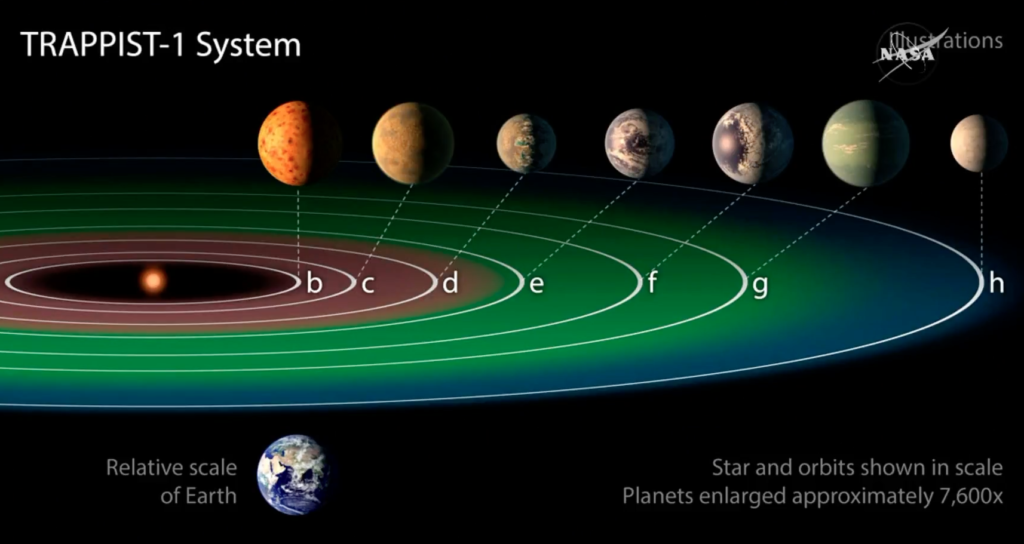Today, Nature published the landmark discovery of a system of seven planets around a star named TRAPPIST-1 about 40 light years away. This star is a red dwarf that is much cooler and smaller than our yellow sun; it is about the size of Jupiter. This is the first time that several planets the size of Earth have all been found within the habitable zone, suggesting the possibility that liquid water–and perhaps life–could exist on one of these worlds.
The temperature of a planet is related to how close or how far away it is from it’s star. Our planet is 93 million miles from our star, the Sun, and because we exist, we can be sure that the conditions here on Earth support life. The habitable zone is the region around a star where an orbiting planet is able to sustain the presence of liquid water on its surface. In a way, the habitable zone is the “Goldilocks zone,” where a planet is neither too hot nor too cold for life.
What is particularly exciting about this discovery is that three of the seven planets are in the habitable zone, all of which are very close to the size of Earth. So far, none of these planets have been confirmed to have water on them, but NASA scientists say that the three planets in the habitable zone could be able to support to liquid water, so it is worth a look.
How do astronomers know all of this information? The observations were confirmed by multiple ground-based telescopes, the TRAPPIST–South telescope, the Very Large Telescope (VLT) at Paranal, and a space telescope known as the NASA Spitzer space telescope. Scientists use multiple instruments to observe the same system to be sure it is significant, and this discovery is big news.
Telescopes aren’t what they were in the days of Isaac Newton. Scientists no longer need to look through a lens to see celestial bodies. Those types of telescopes would not have the resolution or power to detect the presence of planets around stars that are so far away. In fact, Spitzer is not actually “seeing” the planets themselves. Carefully measuring the brightness of the star system for lengthy periods of time allows Spitzer to measure dimming in the star’s light as each planet passes in front of the star along its orbit, like a solar eclipse. The amount of dimming in light corresponds to the size of the planet. Astronomers are able to analyze the number of dimming events, which showed a pattern of seven different bodies passing by the star.
The telescopes were then able to determine the distance that each planet orbits the star by measuring the timing of each dimming event. The less frequent events represented planets that were further away from the star and the more frequent events indicated closer planets. The six inner planets orbit their sun in 1 ½, 2 ½, 4, 6, 9, and 12 Earth days. This is very quick compared to the length of time it takes Earth to orbit the Sun, which is 365 days.
We have come a long way in our ability to detect planets outside of our solar system. The field of exoplanet research is booming. NASA scientists say that it is not a matter of if we discover a habitable planet, but only when.


